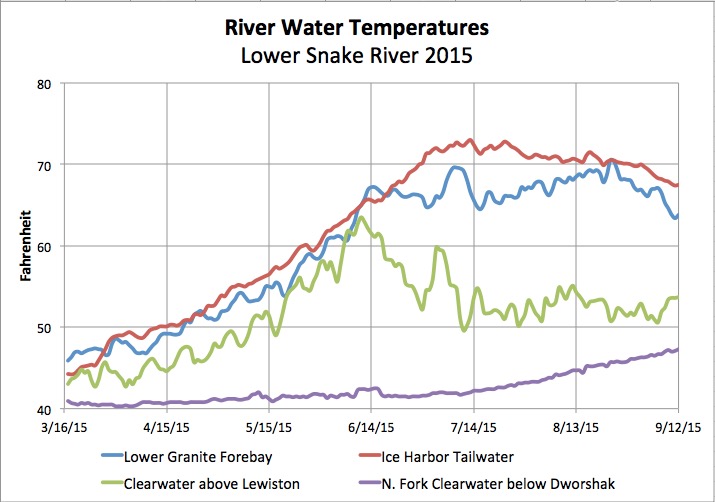forum
library
tutorial
contact

State Gains Keener Watch
of Dams to Protect Salmon
by Editorial Board
Everett Herald, May 19, 2020
|
the film forum library tutorial contact |

|
State Gains Keener Watch
by Editorial Board
|
The state can now require federal dam operators to maintain cooler river temperatures to aid salmon.
 A recent agreement among Washington state and federal agencies is now expected to allow the state more oversight over federal hydroelectric dams, authority that is intended to keep the Columbia and Snake rivers cooler and cleaner and better able to sustain salmon.
A recent agreement among Washington state and federal agencies is now expected to allow the state more oversight over federal hydroelectric dams, authority that is intended to keep the Columbia and Snake rivers cooler and cleaner and better able to sustain salmon.
As with most bureaucratic fixes, the switch in authority and the changes that could come of it won't happen swiftly, but they represent another opportunity to recognize the costs and responsibilities of the Northwest's premier source of energy, at a time when the region is becoming increasingly reliant on electricity from renewable sources.
The state Department of Ecology, following a rule change by the federal Environmental Protection Agency, can now require that federal agencies responsible for the eight dams -- four on the Columbia and four on the Snake -- develop plans and take actions that will keep the rivers cooler than 68 degrees to protect salmon, particularly as they return to spawn in the tributaries where they hatched.
The state agency will also monitor and could potentially fine federal dam operators for releases of pollutants, such as the lubricants used in dam turbines. Oils spills of up to 1,000 gallons have been reported in the past, The Inlander reported last week, but federal agencies had never been fined or otherwise held accountable for such spills.
Salmon, along with their importance to the region's economy and culture, also are vital to the survival of several fish species, the state's orca whales and other wildlife.
"Society is doing a lot of work restoring tributaries for spawning … which is all really important. But if the river is too hot for adult salmon to migrate up, we have a huge problem," said Brett VandenHeuvel, executive director for Columbia Riverkeeper, a conservation group, based in Hood River, Ore.
It's not unusual, VandenHeuvel said, for water temperature in some stretches of the rivers to reach 72 to 73 degrees.
It's expected to take two to three years for the federal agencies involved, including the Army Corps of Engineers and Bonneville Power Administration, to develop plans to lower temperatures, but among options would be habitat improvement projects, such as planting trees to shade waters and the release of cooler water upstream to lower temperatures downstream.
Such releases, or spills of water, already are commonly used to aid juvenile fish passage during the spring and summer. The Army Corps recently announced its spill plans for both rivers, with a greater amount of water expected to be released this year than in past years, part of an agreement among the federal agencies, Washington state and Oregon and the Nez Perce Tribe.
The spills are designed to balance the needs of fish and utility customers.
"This year's operation allows us to continue to take advantage of the off-peak, lower power demand hours to provide 16 hours of spill for juvenile fish passage, while reducing spill for up to eight hours during periods of greater power demand," Tim Dykstra, senior fish program manager for the Corps' Northwestern Division, said in a news release.
And in particular for habitat enhancement work, there are likely costs that could be passed along to electricity rate payers.
But as Pacific Northwest residents have asked utilities to decrease the use of coal and other fossil fuels in the production of electricity and city and state lawmakers have mandated a move toward a future with 100 percent clean electric energy, utility ratepayers will need to accept additional costs related to keeping the power flowing while keeping salmon on our fishing lines and dinner tables and killer whales in our waters.
A transfer of authority from the EPA to the state Department of Ecology should allow state residents and officials to keep a closer eye on the interests of both the power and the wildlife that depend on the state's rivers.
learn more on topics covered in the film
see the video
read the script
learn the songs
discussion forum
